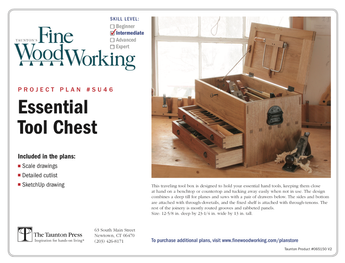I saw this in the Salem News, tomorrow you won’t be able to retrieve it easily so I’ll post it.
Congratulations Phil !
Beverly furniture maker uses skills to teach others how to carve out careers
By Julio Chuy
Staff writer
BEVERLY — When Phil Lowe took a wood shop class at Salem High School, he never imagined he was embarking on a long and interesting career.
Thirty-five years later, Lowe is the 2005 recipient of the Cartouche Award presented by The Society of American Period Furniture Makers.
The award is the highest honor bestowed by the organization of period furniture makers. It recognizes the recipient’s lifetime achievements and also looks at the individual’s excellence in promotion, construction, education or research of American period furniture.
In his career, Lowe has written articles on fine woodworking and has been featured in woodworking videos. He served in the U.S. Navy, where he was able to continue woodworking and eventually went on to teach at North Bennet Street School in Boston for a decade, where he led the furniture-making department for five years.
Since 1985, Lowe has owned and operated a furniture-making and restoration shop at 116 Water St., Beverly, but in 1997, he transformed his business into The Furniture Institute of Massachusetts, where he teaches all facets of traditional furniture-making from drafting a design through to applying the veneer.
“I missed the interaction with the student,” Lowe said. “I had a good mentor, and I wanted to do the same for students.”
Six years after the change, students are now coming from all around the country to learn the classical style taught by Lowe.
The institute runs a two-year program for students who are committed to building high-end furniture, including cabinet-making and restoration. Lowe also runs a summer workshop for people interested in taking up woodworking as a hobby.
People who come to the institute are very committed, according to Lowe. The cost of the two-year program is $17,000 per year, plus tools, materials and housing.
Candidates for the institute must be at least 17 and have a high school diploma or GED, have prior instruction or employment in a woodworking-related trade or be able to demonstrate some ability in woodworking.
Those who attend the school come from all walks of life.
“Some of my students are coming right out of high school; others are middle-age people,” Lowe said.
Some of the school’s graduates go into the restoration business, which is lucrative if a person has the skill, according to Lowe. Others go on to start their own shop.
“I have two graduates who are in the process of starting their own business,” he said.
Six students are studying at the school now; three of them are in their first year.
The size of the shop at the institute allows for a limited number of students, which Lowe said allows him to focus on each student’s individual needs and is ideal for the Sloyd technique he uses to teach woodworking.
The Sloyd style, developed in Sweden in the 19th century, not only teaches theory and basic woodworking, but stresses the importance of the way a student stands and holds their tools while working.
“The exciting thing for students is to see me work. They see how I hold tools and the way I pace my work. That’s part of their education,” Lowe said.
Also, pupils can keep any of the furniture they make during their studies.
“It makes it more special and they put more effort into it,” Lowe said.
Teaching students how to make furniture has not stopped Lowe from making furniture to sell. He recently sold a set of Greek-style chairs for $16,000 to a New York couple.
Making the chairs by hand took him two months, Lowe said, because he was working on them part-time since teaching is his priority.
Lowe has also done a lot of furniture conservation work. Recently, he worked on a chest for the Peabody Essex Museum that sold at auction for $2.4 million. He has also restored items for Yale University; Beverly, Marblehead and Manchester historical societies; U.S. Department of State; and a privately owned set of card tables that were later auctioned for almost $1 million.
“I enjoy the teaching and the making of furniture, but I also enjoy seeing how cabinets were set up,” Lowe said. “I learn from old furniture, see the good craftsmanship, and the carving details.”
To become really skillful in his line of work takes about 10 to 15 years, according to Lowe.
“But you never stop learning. I still have a few things I need to learn,” Lowe said. “You always strive to achieve a higher level.”














Replies
Great story!
Mike
Thanks. Phil Lowe is a remarkable woodworker and teacher both.
Ron,
Thanks for sharing, I love to read what Phil writes, it's full of great stuff.
I read a brief (too brief) article on the Sloyd approach in Woodwork Mag a few months ago. Based on your comments, I believe the video that Phil did for FWW here last year on cutting dovetails was using some of the Sloyd technique(??). I sure wish we could get a bit more exposure to Phil and the Sloyd system...
thanks
This forum post is now archived. Commenting has been disabled